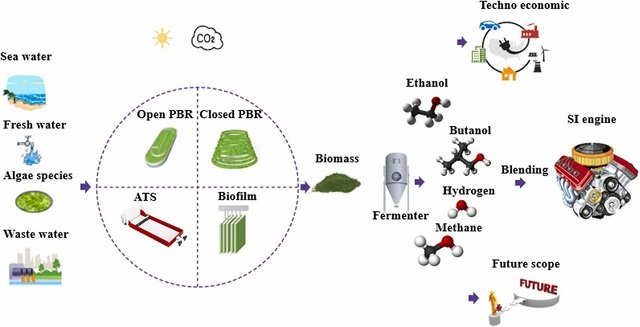By Anne Manning, Colorado State University
Think of algae, and you might think of the brilliant green strands waving in a stream or the blue-green blooms that invade lakes. But the majority of these diverse aquatic organisms that exchange sunlight for energy are brown-colored, like the large forests of seaweeds found in polar regions or coastal California.
Brown algae are brown (and therefore not as pretty) because they have evolved a special set of pigments that absorb even more light for photosynthesis than green plants and green algae do. This makes brown-colored algae extremely important to life on Earth, producing 20% of the oxygen we breathe. The biochemical mechanisms by which these brown algae are so good at converting sunlight into energy has so far been a mystery to scientists.
Colorado State University biologists, in partnership with researchers in Germany and China, have unveiled foundational new insights into the evolutionary steps these algae took to make their novel brown pigments, which are called fucoxanthin.
Graham Peers, associate professor in CSU’s Department of Biology, co-led the study with Martin Lohr at Johannes Gutenberg-Universität in Germany and Xiaobo Li at Westlake University in Hangzhou, China. Publishing in Proceedings of the National Academy of Sciences, the team used the genetic investigation method known as CRISPR/CAS9 to remove the function of genes that account for the algae’s brown pigment, turning their mutant varieties green in the process. CSU postdoctoral researcher Yu Bai was first author on the manuscript.
The Peers group, which studies photosynthetic efficiency and algal ecophysiology, identified the gene targets and performed the experiments that allowed the team to see what happened when these brown pigment-related genes were disabled.
Fucoxanthin has nutraceutical, pharmaceutical applications
During the last decade, fucoxanthin has become a subject of rising interest for nutraceutical and pharmaceutical applications. First mentioned in the scientific literature 150 years ago, the chemical structure of fucoxanthin was established in the 1960s. What wasn’t known was exactly how the algae synthesize this natural product.
This biochemical synthesis pathway turned out to be complex; writing in PNAS, the researchers showed that the brown-pigment fucoxanthin evolved by duplication of ancient genes that generate photoprotective pigments. Along the way, some of these gene copies gained more and more complex functions, enabling the synthesis of other pigments that became extremely well-suited for photosynthesis.
“These algae are somehow able to mix and match, then reprogram their cellular machinery for capturing light in a way that land plants have not done,” Peers said.
Stay Always Informed
Join our communities to instantly receive the most important news, reports, and analysis from the aquaculture industry.
The new study provides a rich context on which to build further studies that could enable transfer of the brown pigment’s extreme light-harvesting efficiency into other organisms or uses.
For example, learning about how brown algae evolved could give scientists better insights into the fucoxanthin pigment as a nutraceutical for various health applications. And in biofuels research, understanding how to alter the content of this pigment in a cell could lead to harnessing better photosynthetic efficiency for producing larger quantities of biofuels with the same amount of light, land and effort as conventional fuels.
Reference (open access)
Yu Bai, Tianjun Cao, Oliver Dautermann, et al. 2022. Green diatom mutants reveal an intricate biosynthetic pathway of fucoxanthin. PNAS, Plan Biology, Vol. 119 | No. 38. https://doi.org/10.1073/pnas.2203708119
Editor at the digital magazine AquaHoy. He holds a degree in Aquaculture Biology from the National University of Santa (UNS) and a Master’s degree in Science and Innovation Management from the Polytechnic University of Valencia, with postgraduate diplomas in Business Innovation and Innovation Management. He possesses extensive experience in the aquaculture and fisheries sector, having led the Fisheries Innovation Unit of the National Program for Innovation in Fisheries and Aquaculture (PNIPA). He has served as a senior consultant in technology watch, an innovation project formulator and advisor, and a lecturer at UNS. He is a member of the Peruvian College of Biologists and was recognized by the World Aquaculture Society (WAS) in 2016 for his contribution to aquaculture.




